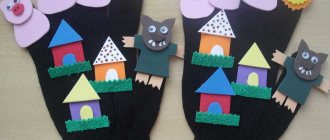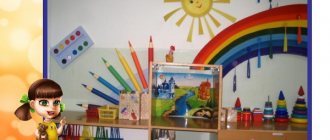Rational nutrition is the basis of a healthy and fulfilling human life. A balanced, varied menu and food intake are important at any age, but are of particular importance during the growth and development of the child’s body. His well-being, mood and health will depend on how well a child’s diet is prepared.
Young children spend most of the day outside the home. In this regard, the most important task of the management is the competent organization of nutrition for children in kindergarten.
Our company believes that a child needs a large amount of nutrients for growth and development. Outdoor games, learning new things, active metabolic processes are accompanied by voluminous energy consumption. To restore these, the body needs regular balanced nutrition containing a sufficient amount of nutrients and water.
Organization of meals for children in kindergarten
Dishes acceptable for preparation in kindergarten are selected taking into account the age and daily needs of the child’s body. The menu is approved by the head of the institution for a period of at least 15 days. The products used for cooking are determined by the area of residence and nationality of the preschool children, as well as the presence or absence of health problems.
The meal plan includes breakfast, lunch, afternoon snack and dinner. In this case, breakfast should consist of a hot dish, a hot drink and bread. Lunch - first and second hot courses, drinks, snacks. The afternoon snack consists of a bakery product and a drink. Dinner includes hot food, salad and tea. If there is no product installed by the manual, an equivalent replacement is possible.
List of products recommended for use:
- Meat and fish products
- Boiled chicken eggs
- Milk products
- Vegetable and animal fats
- Confectionery
- Vegetable dishes
- Fruits
- Juice, tea, cocoa, compote
- Bread
- Salt
Prohibited for use:
- Products without preliminary heat treatment
- Canned food
- Shellfish
- Confectionery with cream filling
- Drinks containing caffeine
- Drinks containing dyes and carbon dioxide
Before approving the main menu, a tentative list of dishes is drawn up. They are prepared based on culinary technologies and recipe books developed specifically for preschool institutions.
Parents are informed every day about the list of products served to children during the day. This obligation is fulfilled by the head of the institution by posting the daily menu in groups, indicating the names of dishes, the weight of portions and a list of replaced products (if some children have allergic reactions or other pathologies).
Catering at preschool educational institutions
Organization of children's meals
Properly organized nutrition for preschool children in a kindergarten is an important factor in shaping the growth, development of a child and his health, not only at the moment, but also in the future.
The kindergarten has a separate food department, consisting of two workshops, a vegetable store, and a pantry for storing food. The food service area has a separate exit. The catering unit is staffed and equipped with all the necessary technical equipment.
The work of the food department is organized based on raw materials. Food products are delivered by suppliers in accordance with concluded contracts. Acceptance of food products and food raw materials at preschool educational institutions is carried out in the presence of documents confirming their quality and safety.
Products are selected so that they complement each other in a balanced manner and the child receives the required amount of calories, vitamins and microelements per day for his age. When compiling a 10-day cyclical menu for an institution, such a factor as the variety of dishes is taken into account. This means that the children receive a different meal every day.
Today in our kindergarten we have 4 meals a day. Every day, a detailed menu is posted for parents in each group, indicating the name, volume (weight) and calorie content of each dish and drink.
Receipt of food for groups is carried out by junior teachers strictly according to the schedule approved by the head of the kindergarten. The drinking regime is strictly observed.
Meals for children are organized in group rooms. Tableware and teaware are allocated for each group, made of porcelain (plates, cups), and cutlery made of stainless steel.
CONTROL
The process of organizing nutrition in kindergarten is based on regulatory and methodological documents on nutrition. Control over the organization of meals in preschool educational institutions is carried out by the nutrition commission and parents. Representatives of the parent community periodically monitor the quality of prepared food in the catering unit.
Questions about catering can be asked from 9.00 to 17.00:
to the head of the MKDOU Sudai kindergarten “Cornflower”: Galina Pavlovna Polomina by phone: 5-11-29
The procedure for organizing children's nutrition was developed in accordance with current natural nutrition standards, regulations of the Russian Federation on the organization of nutrition for preschool children, legislative requirements in the field of sanitary well-being of the population:
Resolution of the Chief State Sanitary Doctor of the Russian Federation dated May 15, 2013 N 26 g Moscow "On approval of SanPiN 2.4.1.3049-13 "Sanitary and epidemiological requirements for the design, maintenance and organization of the operating mode of preschool educational institutions"
From January 1, 2022, the preschool educational institution operates taking into account changes in SanPin
Resolution of October 27, 2022 No. 32 From the approval of sanitary and epidemiological rules and norms SanPin 2.3/2.4.3590-20 “Sanitary and epidemiological requirements for the organization of public catering for the population”pdf
Orders
Order “On the organization of meals in preschool educational institutions 20.”pdf
Provisions
Regulations on catering.pdf
Regulations on the Rejection Commission.pdf
Approximate cyclical ten-day menu for catering
Approximate cyclical ten-day menu for catering.pdf
For parents
Diet
The number of meals depends on the length of time the child is in kindergarten and his age. For children staying in a preschool institution for more than 8 hours, four meals a day are provided.
- First breakfast – from 8:00 to 9:00
- Second breakfast – from 10:30 to 11:00
- Lunch – from 12:45 to 13:45
- Afternoon tea - from 15:00 to 15:30
If children stay in kindergarten for more than 12 hours, the number of meals increases. Added to the standard mode:
- Dinner – from 17:30 to 18:30
- Second dinner – from 20:00 to 21:00
During the second dinner, fermented milk products are mainly used.
Menu for children prone to allergic reactions
Due to hereditary factors, environmental conditions and the quality of food products, some children have a tendency to allergies. A child’s fragile immune system is not always able to cope with the aggressive influence of the external environment. Such children need a separately developed menu using hypoallergenic products.
Before admission to kindergarten, the child undergoes an examination at a medical organization, as a result of which the parents are issued a certificate reflecting the child’s health status and the possibility of his developing hypersensitivity to certain foods. This document is provided to the kindergarten, on the basis of which a separate menu is developed for a child with allergies. Preschool institutions can also organize special groups for children with a tendency to allergies. Developing individual nutrition for such children is the responsibility of the kindergarten, regardless of the availability of specialized groups for children with hypersensitivity.
Eating
The process of nutrient absorption is influenced by a number of factors: appetite, the appearance of the dish, the mood of the children, the room used for eating.
The routine in kindergarten is organized in such a way that active games, physical and intellectual exercise are completed 20-30 minutes before meals.
The teacher teaches children to calmly take their places at the tables. Any comments and recommendations during meals are pronounced in a friendly, calm voice.
Meals are taken in clean, well-ventilated areas. Tables and chairs are arranged in a way that is comfortable for children, so as not to impede their movements.
Table setting is important. It is recommended to use dishes that are pleasing to the eye and the same for each child. Tableware should be comfortable and appropriate for the age of the children. The table surface is covered with a clean tablecloth or children are given individual dinner napkins.
During their stay in a preschool, children are taught the rules of using cutlery and behavior at the table. Teachers teach children to keep tables clean and tidy. Depending on the age of the children, the number of cutlery and the serving of dishes vary. In younger groups, fruits, vegetables and eggs are distributed chopped and peeled; children use only a fork and spoon. In preparatory groups, children themselves peel boiled eggs, cut vegetables, and learn to hold a knife in their right hand and a fork in their left hand.
With proper organization of children's nutrition in kindergarten, children eat food with appetite , learn table manners, which is necessary in later adult life.
Child's refusal to eat
While in kindergarten, a child may refuse to eat for several reasons:
- Adaptation. The first days in preschool are the most difficult for a child. Stress caused by an unusual environment is a natural reason for refusing to eat. The eating regime will improve after some time, when the child gets used to the new conditions.
- Disease. Loss of appetite may be caused by the development of the disease. A doctor's consultation may be required to determine the cause.
- Some children have an insufficient level of self-care. In this case, you need the help of a teacher who can teach the child how to use cutlery.
“Catering organization” (from work experience)
Ekaterina Tokareva
“Catering organization” (from work experience)
Report from work experience on the topic “ Catering ”
Tokareva Ekaterina Evgenievna
The organization of rational nutrition for preschool children is based on compliance with approved products and a sample menu. A properly composed menu is a prerequisite for a balanced diet . The basis of the menu is approved sets of food that provide the physiological needs of children for basic nutrients and energy: meat, fish, dairy products, fresh fruits and vegetables in their natural form and in the form of salads; as well as the exclusion of frequent repetition of dishes during the validity period, compatibility of products and established traditions and habits.
The organization of meals in a preschool educational institution must be combined with the proper nutrition of the child in the family . We must strive to ensure that homemade meals complement the kindergarten diet. To do this, I post the daily menu in the kindergarten reception area. I give recommendations to parents about what to do in the evening (dinner)
give the child food that he did not eat in kindergarten.
On weekends and holidays, it is better to bring the child’s diet closer to the kindergarten diet. Rational nutrition of preschool children is a necessary condition for their harmonious growth, physical and neuropsychic development, resistance to infections and other adverse environmental factors.
Meals at the preschool educational institution are organized according to the following principles:
— Adequate energy value of diets corresponding to the energy expenditure of children;
— A balanced diet, including proteins and amino acids, dietary fats and fatty acids, various classes of carbohydrates, vitamins, mineral salts and trace elements;
— Maximum variety of diet;
— Active technological and culinary processing of products and dishes ;
— Taking into account the individual characteristics of children (food intolerance)
;
— Ensuring sanitary and hygienic food .
Food is a pleasure: after a good meal, the brain produces endorphins - special substances that bring a feeling of peace and improve mood.
Before going to the kitchen to get dishes, the assistant teacher wipes the tables , washes his hands, and changes his robe. Then he places all the utensils needed for serving on the serving table, and the attendants, after washing their hands, place them on the children’s tables. Duty is introduced from the second half of the school year for children of the younger group.
The general education program includes tasks for the development of work activity, instilling a value attitude towards one’s own work, the work of other people and its results. I develop in children the ability to independently perform the duties of a canteen attendant: carefully arranging bread bins, cups and saucers, deep plates, napkin holders, laying out cutlery. The assistant receives all ready-made meals Carry with the lid closed and cover with a towel.
While the assistant teacher brings food and the attendants set the tables, I, along with the other children, play quiet games or read books.
Before sitting down at the table, children wash their hands with soap. After serving the dishes, I invite the children to the table. Preschoolers should not be forced to sit at the table for a long time waiting for food to start. I make sure that the food served to children is beautifully presented and retains its characteristic shape (the cutlet and piece of casserole are not broken)
. After eating, kids leave the dishes on the table. Older children clear the dishes themselves.
During meals, I create a positive attitude towards food in children, tell them what it is made from and about its benefits. Inextricably with eating is the education of cultural and hygienic skills. I teach children: to sit correctly while eating; eat carefully; chew food thoroughly and silently; use cutlery; use a napkin.
During meals, the assistant teacher and I make sure that the children’s tables are always clean while eating, we speak to the children not loudly, addressing a specific child. In early age groups, the teacher and his assistant feed the children while sitting on a chair to the right of the child.
When conducting any process where I develop skills in children, the main role belongs directly to the adult. Only with the right educational approaches and influences can you form organized behavior in children , teach them the appropriate skills and instill in them cultural and hygienic skills and rules of behavior. I use various methods of pedagogical influence on children: training (based on behavior patterns)
;
exercise (repetition of certain actions)
;
educational situations (creating conditions for using a skill)
;
role model (illustrative example)
;
punishment (I use it extremely rarely - condemnation of a negative act)
;
examples from literature (actions of heroes)
;
explanation (how and why one should act in a given situation)
;
conversation (opportunity to express your opinion)
;
encouragement (praise)
.
What can you praise your child for while eating? Here are the examples that I use in my work :
(fork) correctly
;
— Sits straight;
— Doesn’t lick his fingers, but wipes them with a napkin;
— Doesn’t take a full spoon;
— Correctly breaks off a piece of bread from a whole piece with his left hand.
And remember, eating should be a pleasure. Appetite comes with eating. Enjoy your meal!
Organizing child nutrition at home
Homemade meals for a preschooler must be organized in accordance with the meals in kindergarten. Uncontrolled consumption of food by a child is unacceptable, since excess intake of calories into the body can provoke excess weight gain and the development of pathologies of the endocrine, cardiovascular system and musculoskeletal system. In order to properly organize your child’s home nutrition, it is important to study the kindergarten menu every day and prepare homemade food based on the type and quantity of products already used.
On holidays and weekends, it is also recommended to adhere to the kindergarten regime, this way it will be easier for the child to adapt and form the habit of eating regularly.
The more developed a child’s nutritional skills are, the more successful his future life will be. The ability to eat according to the regime and needs of the body is the key to good health.
Nutrition in kindergarten: control by parents
Parents can also take an active role in their children's nutrition. Not only can they, but they should.
You can start with the fact that before entering kindergarten, you can look at its menu on the preschool institution’s website and try to switch your child to kindergarten products. This will partially ensure successful adaptation.
The organization of nutrition for children in a preschool educational institution must be combined with the proper nutrition of the child in the family. We must strive to ensure that homemade meals complement the kindergarten diet.
Secondly, parents are obliged to warn teachers if the child is allergic to some product. To prevent your baby from being fed an allergen, it is enough to write a statement addressed to the manager listing the “forbidden” foods.
The nutritionist is responsible for nutrition in the kindergarten. In case of her absence, the duties of the nutritionist are assigned to the nurse. If you have any questions, you should contact her.


